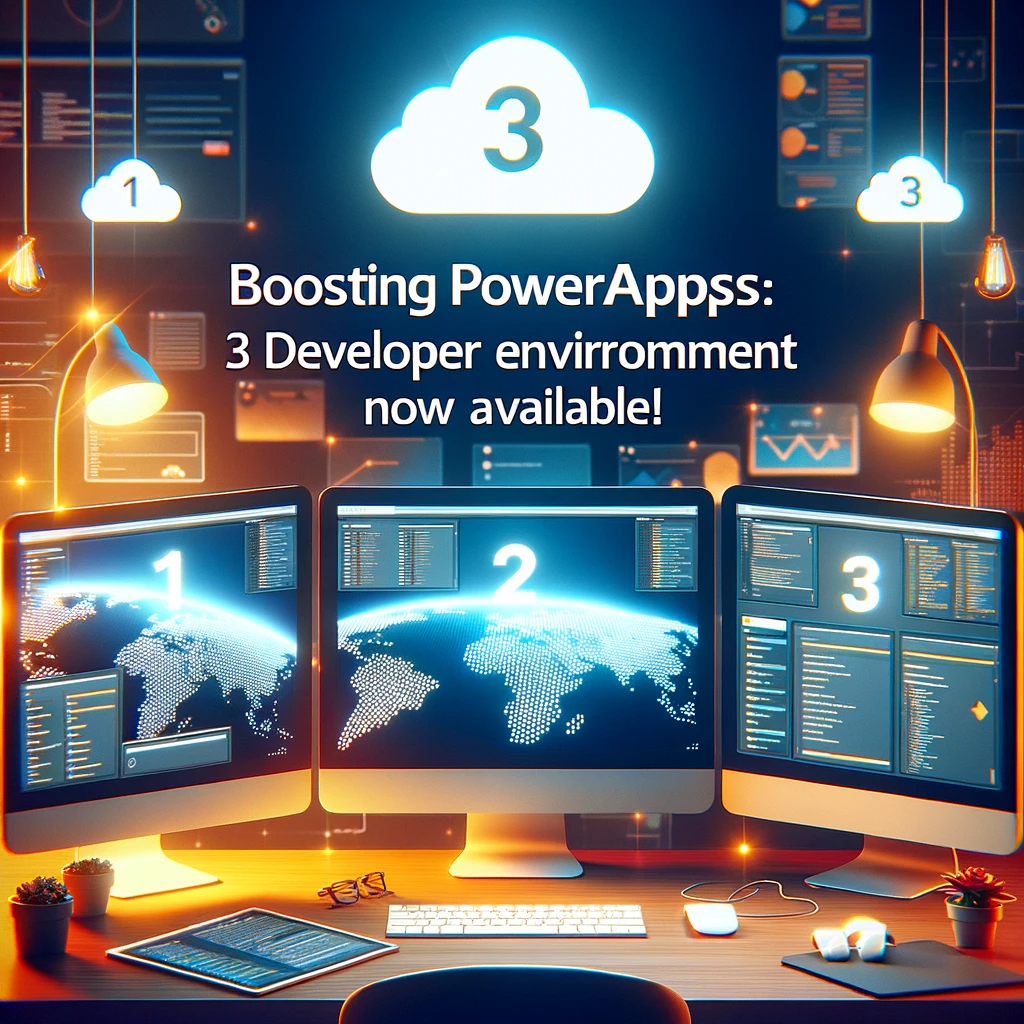Introduction
In the ever-evolving world of PowerApps development, Microsoft has taken a significant step towards enhancing the developer experience. They have introduced a feature that allows Power App Makers to create up to three developer environments per user. Let’s dive into the details of this new change and understand its implications.
The New Preview Feature: 3 Developer Environments per User
While the concept of developer environments isn’t novel, traditionally, users could provision just one developer environment per subscription. These environments serve as a separate space where app developers can test, experiment, and even play, especially for those without a Dataverse license.
Now, with the new preview feature, there’s the flexibility to provision up to three developer environments for each user. This enhancement addresses various needs, such as:
- Testing or experimenting with moving data or solutions between different environments.
- Setting up an environment with a distinct region or language for evaluation.
- Requiring a fresh environment for presentation or demo purposes.
For an in-depth analysis and further details, consider checking out the official Microsoft blog post.
Benefits and Limitations
Among the primary advantages of a developer environment are its comprehensive Dataverse functionalities. It empowers users with the ability to employ premium connectors and even share the created apps with their organization’s members. An additional perk is that the Dataverse database within these environments doesn’t contribute to the total tenant capacity. This ensures that administrators need not stress over excessive storage usage or unexpected costs.
However, there are some constraints to note. Each developer environment comes with a 2GB storage cap. Furthermore, if left unused, these environments will be automatically deleted after 90 days.
Creating and Managing Developer Environments
To leverage this preview feature:
- Visit the ‘preview’ Maker Portal.
- Select the Environment name, then click ‘Try it now’ within the section suggesting a personalized environment.
- Fill in the Environment details and select your region.
- Click ‘accept’ to establish the new environment.
Alternatively, you can create these environments via the Power Platform Admin Center:
- Go to the Power Platform Admin Center.
- Click ‘Environments’ and then the ‘New’ button.
- From the dropdown, select the ‘Developer’ option to create your developer environment.
Additional Management Features
You can also reset a developer environment, which removes all data, apps, and flows. Just click the ‘3 dots’ next to the environment in the Power Platform Admin Center, and from the context menu, choose ‘Reset’. Moreover, if you wish to transition a project from the developer environment to make it live, you can use the ‘Copy environment’ feature to transfer data and table schemas to a sandbox environment.
Conclusion
Microsoft’s initiative to enable up to three developer environments per user significantly elevates the PowerApps development experience. Whether it’s for experimentation, demonstration, or any other purpose, developers now have more flexibility than before. If you have further queries or require technical assistance, don’t hesitate to contact us. Our team is always here to support and guide you in optimizing your PowerApps experience.






